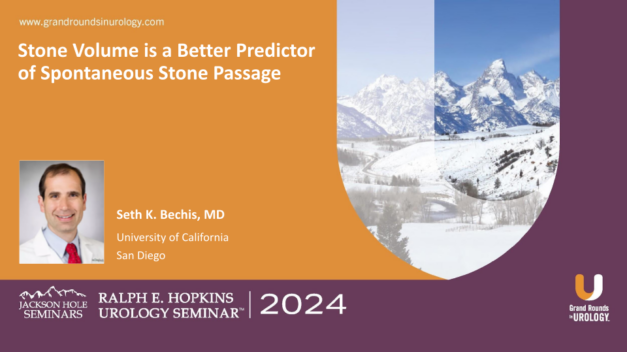Stone Volume is a Better Predictor of Spontaneous Stone Passage
Dr. Seth K. Bechis, MD, discusses the critical role of stone volume as a predictor of spontaneous stone passage in patients with urolithiasis. He emphasizes that while stone size has traditionally been considered the primary factor in determining the likelihood of spontaneous passage, emerging evidence suggests that stone volume offers a more accurate assessment. Dr. Bechis advocates for integrating this assessment into routine evaluation protocols.
In this 16-minute presentation, Dr. Bechis explains that stone volume, which accounts for both the size and the three-dimensional shape of the stone, provides a more comprehensive measure that correlates better with clinical outcomes. This is especially relevant in determining whether to pursue active intervention or adopt a more conservative, observational approach.
Read More




